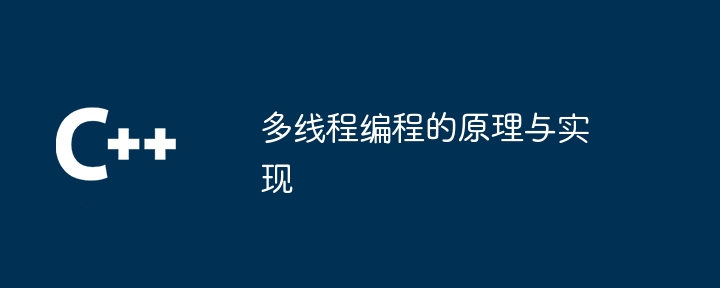多线程编程是一种将程序拆分为并发执行的线程的技术,提高效率。实现原理包括:创建线程、定义行为、启动线程、协调和终止线程。

多线程编程原理与实现
原理
多线程编程是一种将一个程序分解为多个并发执行的线程的编程技术。它允许程序同时处理多个任务,从而提高效率。
每个线程都有自己独立的栈和程序计数器,它们共享应用程序的内存空间和资源(如全局变量)。线程在运行时由操作系统或虚拟机调度,以并行方式执行。
实现

华友协同办公管理系统(华友OA),基于微软最新的.net 2.0平台和SQL Server数据库,集成强大的Ajax技术,采用多层分布式架构,实现统一办公平台,功能强大、价格便宜,是适用于企事业单位的通用型网络协同办公系统。 系统秉承协同办公的思想,集成即时通讯、日记管理、通知管理、邮件管理、新闻、考勤管理、短信管理、个人文件柜、日程安排、工作计划、工作日清、通讯录、公文流转、论坛、在线调查、
 0
0

不同的编程语言和环境使用不同的方法实现多线程,但基本原理是相似的:
Thread 类或 C++ 中的 std::thread) 创建线程。start() 方法或类似方法启动线程。join() 或类似方法来终止它并等待它完成。实战案例
Java 示例
public class MultithreadingExample {
public static void main(String[] args) {
Thread thread1 = new Thread(() -> {
// 任务 1
});
Thread thread2 = new Thread(() -> {
// 任务 2
});
thread1.start();
thread2.start();
try {
thread1.join();
thread2.join();
} catch (InterruptedException e) {
// 处理中断异常
}
}
}C++ 示例
#include <iostream>
#include <thread>
using namespace std;
void task1() {
// 任务 1
}
void task2() {
// 任务 2
}
int main() {
thread thread1(task1);
thread thread2(task2);
thread1.join();
thread2.join();
return 0;
}以上就是多线程编程的原理与实现的详细内容,更多请关注php中文网其它相关文章!

每个人都需要一台速度更快、更稳定的 PC。随着时间的推移,垃圾文件、旧注册表数据和不必要的后台进程会占用资源并降低性能。幸运的是,许多工具可以让 Windows 保持平稳运行。

Copyright 2014-2025 https://www.php.cn/ All Rights Reserved | php.cn | 湘ICP备2023035733号